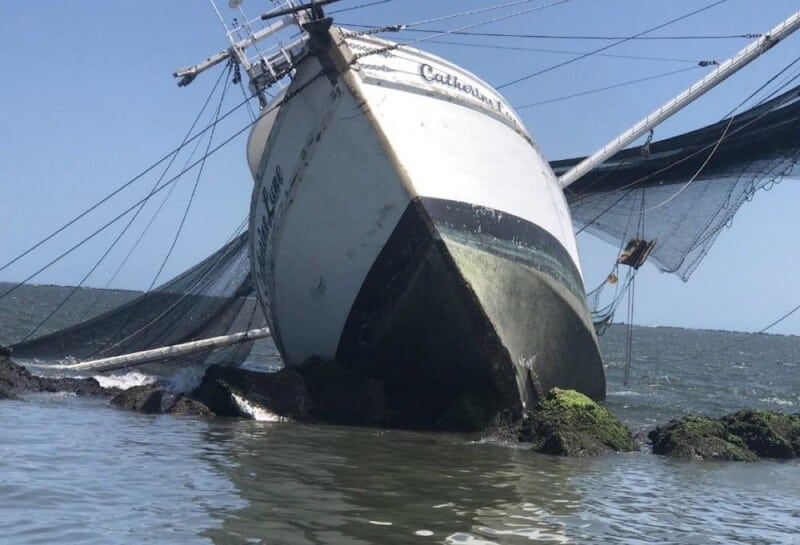Overreliance on autopilot linked to multiple fishing vessel accidents
Fishing Vessel Grounding Highlights Autopilot Risks

On June 9, 2021, the fishing vessel Sage Catherine Lane ran aground on the north jetty at the St. Marys Entrance near Cumberland Island, Georgia, during a routine transit. The vessel began taking on water shortly after the incident, prompting the three crew members to abandon ship and seek rescue from a nearby vessel. The Sage Catherine Lane ultimately sank, resulting in a total loss estimated at $1 million. Investigations revealed that the vessel was operating on autopilot at the time of the grounding.
Autopilot Engagement and Consequences
The captain of the Sage Catherine Lane, an experienced fisherman with over 30 years in the industry, had engaged the autopilot to allow for a brief rest. He intended for the vessel to maintain its course out of the inlet toward open water. However, the autopilot malfunctioned, leading to a sudden turn toward the jetty. “I turned around to get my socks and boots to put them on. I felt the boat turn hard to port. I looked up and we were heading straight for the jetty,” the captain recounted to authorities.
Despite his attempts to regain control by reversing the vessel, it was too late. The Sage Catherine Lane struck the jetty and ran aground before the captain could react effectively. Autopilot systems are commonly used in marine operations to ease the burden of navigation, especially in open waters. However, they can also foster complacency among operators, as highlighted by a 2016 Coast Guard safety alert. The alert warned that overreliance on autopilot can lead to negligent navigational practices, with operators becoming too engrossed in other tasks and neglecting their responsibilities at the helm.
Recent incidents involving fishing vessels illustrate the dangers of autopilot use. For instance, in May 2024, the fishing vessel Papa Rod collided with an anchored bulk carrier while the deckhand on watch was asleep. Similarly, in October 2022, the Tremont turned into the path of a containership due to the mate’s inattentiveness while troubleshooting equipment. In January 2016, the Day Island ran aground after its captain fell asleep while the autopilot was engaged. These cases underscore the potential hazards associated with leaving the helm unattended.
Regulatory Insights and Recommendations
The National Transportation Safety Board (NTSB) has investigated numerous accidents involving fishing vessels where autopilot was a contributing factor. In the case of the Sage Catherine Lane, the NTSB noted that had the captain remained in the wheelhouse after engaging the autopilot, he could have responded to the failure and regained control of the vessel. The NTSB emphasized that autopilot use does not absolve operators of their responsibility to maintain a proper navigation watch, particularly in confined waters where quick reactions are essential.
Pilot Of Towing Vessel That Hit Louisiana Pier Was Asleep, NTSB Reports
While the NTSB has not issued specific safety recommendations addressing the overreliance on autopilot in the fishing industry, the agency continues to highlight the importance of vigilance. Navigating in channels and harbors requires heightened awareness due to traffic, currents, and frequent course changes. As such, the use of autopilot is often discouraged or prohibited in these critical areas. The Sage Catherine Lane incident serves as a stark reminder of the potential consequences of complacency in maritime operations.
